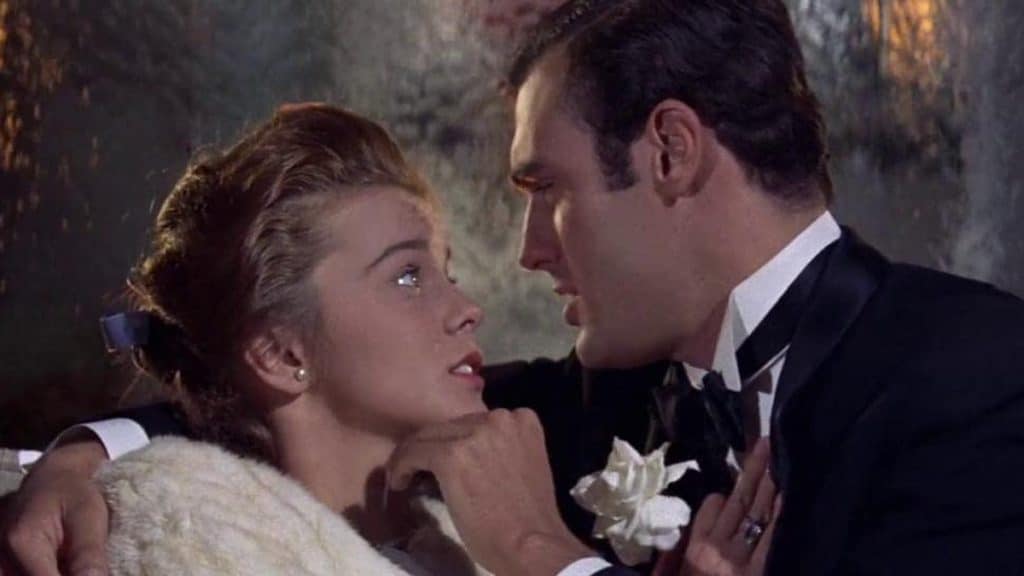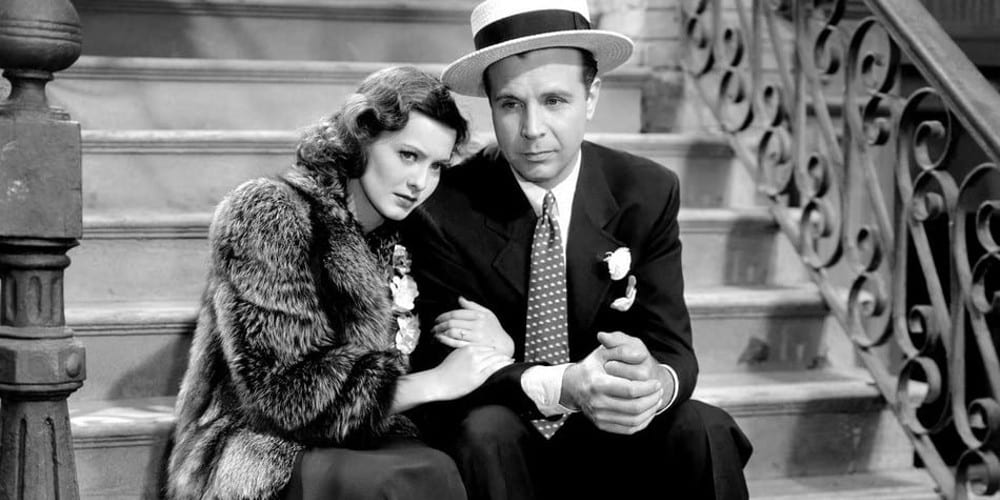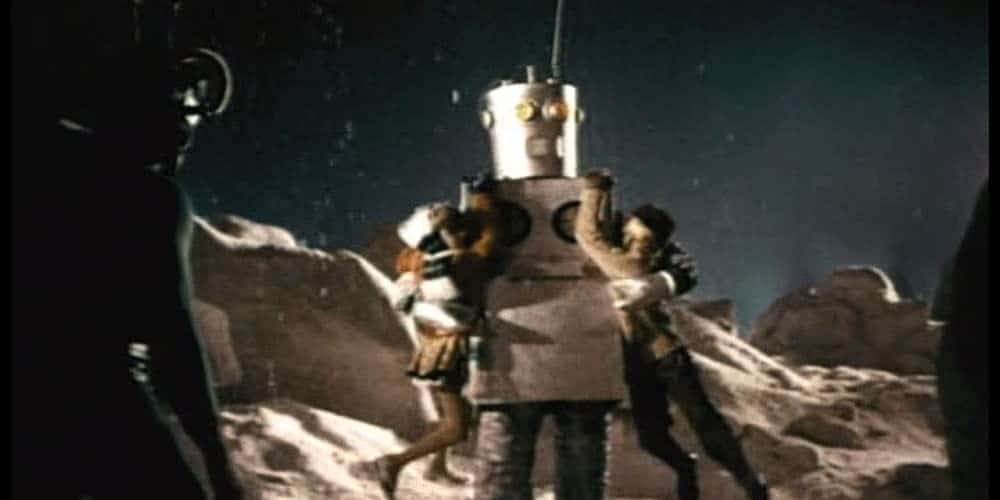KinoKultur is a thematic exploration of the queer, camp, weird, and radical releases Kino Lorber has to offer.
Beneath the great Kino Lorber distribution partner family tree, there are a few classic presents worth opening this holiday season. Below is a brief guide to four films that offer interesting things to contemplate during this time of year, films that—in the spirit of the season, invite the audience to consider charity, capital, and country as they were when these pictures were new and today.

“I love Cinderella stories,” the butler says in Frank Capra’s Pocketful of Miracles (1961). A remake of Capra’s own Lady for a Day (1933), the film tells the story of Apple Annie (Bette Davis), an apple seller on the streets of New York whose produce produces fruitful good luck for big-time bootlegger Dave the Dude (Glen Ford). When Annie’s daughter Louise (Ann-Margaret) arrives from Spain with her aristocratic fiancé and his father, the Dude and his gang (including a wise-cracking Peter Falk) return the favor and help Annie appear to be a belle of society.
At its heart, Pocketful of Miracles is a charming story about paying forward with a little class-as-performance sprinkled on top like tinsel. Bette Davis’ pathos and poignancy are damn near heartstopping at times, particularly when she sees Louisa for the first time since she was an infant. Even in her first role, it’s clear Anne-Margaret is destined to be a darling of the screen. She’s utterly effervescent, with the voice of a dove. Between her and Davis, New and Old Hollywood passing in the night.
Sadly, the women in this picture are mostly emotional. Davis brings depth where she can, but all the good lines go to the men. Within that context though, Ford and Falk crackle as tenderhearted wiseguys. Falk’s acting persona was well cemented by this time but his deadpan, sarcastic line readings feel fresh, innovative, and most importantly idiosyncratic. He and Ford quip at each other with some of the best “now sees here” Prohibition-era comedy this side of the 1930s.
All this plays thanks to the work of Capra, one of the most influential directors of his era. Even in the 1960s, he was still composing bold shots and staging total ruckus. He delightfully manipulates selections from Tchaikovsky’s Nutcracker to create and release tension. With that said, Pocketful of Miracles’tableau of life in New York does get away from him at times.
For a story that can be boiled down to a simple rags-to-riches ruse, it feels overstuffed due to mob machinations and exposition. Despite these early drags, the final act is a heck of a trick, one that proves that Davis, Ford, Falk, Capra, and company have plenty more miracles in their pockets to share.

In contrast to Pocketful of Miracles’ myriad delights, Preston Sturges’ second film, Christmas in July (1940) is a quaint story that doesn’t offer quite enough. Jimmy MacDonald (Dick Powell) is down and out with his gal Betty Casey (Ellen Drew). Jimmy’s been working the background of an ad agency, trying to make ends meet when he decides to enter a contest awarding $25,000 to anyone who can think of a good slogan for coffee.
When a telegram lands on his desk telling him he’s won the contest, Jimmy’s heart swells as he rushes out to buy presents for everyone he loves. Everyone gets an automatic fold-out bed! But when the legitimacy of his win is called into question, Jimmy will have to prove his worth in more ways than one with a little help from Ellen.
It’s a perfectly fine fairy tale set amongst the emerging world of New York “mad men.” Like Pocketful of Miracles, it’s a sort of Cinderella story—one that recognizes the mortal cost of poverty but brushes it under a rug to tell a hopeful yarn about an overnight millionaire. Though it may seem that the bauble of The American Dream is going to remain broken and exposed, Christmas in July works overtime to reaffirm American ideals of meritocracy.
Sturges’ early writing is more sentimental and saccharine when compared to the whip-smart snark that earned his later films their love. While some moments suggest this comedic sense is forthcoming, but Christmas in July remains deeply committed to being a sentimental melodrama.
In Ellen’s America, those who failed are still happy because they were given “a shot.” To her, that’s all anyone needs to be content.
When Ellen makes her final impassioned plea to Jimmy’s boss, begging him to give Jimmy a chance, it becomes clear just how far Christmas in July has lilted from the terrain of actual reality. In Ellen’s America, those who failed are still happy because they were given “a shot.” To her, that’s all anyone needs to be content.
Of course, time has proven Ellen’s universalisms decidedly false. Chances are only given to a select few and those excluded or rejected are not happy with crumbs. Diluted by lukewarm ideology, the sparkling bubbles we expect from Preston Sturges are sadly flat.
For a more Chekhovian Christmas, look no further than The Holly and the Ivy (1952). As parish priest Martin Gregory (Ralph Richardson) gathers his family for Christmas at their home in Norfolk, England, it soon becomes clear that a great deal sits unsettled beneath the crisp snow.
Jenny (Celia Johnson) Gregory’s eldest daughter and caretaker, wants to leave and be married to her beau David (John Gregson). Michael Gregory (Denholm Elliot) has become an atheist during his time in the service. And his prodigal daughter Margaret (Margaret Leighton) has returned home with an addiction and a buried secret. As the melting frost exposes deep undercurrents of hostility, the family will have to clash before any sort of resolution can be achieved.
The Holly and the Ivy is delightfully engaged with English folklore as was common during the era of 20th-century nationalism
The powerhouse performances of The Holly and the Ivy’s central women make the picture feel larger than it is. Johnson and Leighton both have a deeply impressive command of their characters—Johnson with Jenny’s growing confidence and Leighton with Margaret’s crumbling fortifications. A brief scene where the two catch up in the kitchen has such depth that its sorrow almost becomes overwhelming.
But unlike Chekhov, this isn’t Russian. Despite its rich backstories and interest in the fading of tradition in the light of modernity, The Holly and the Ivy remains tender, quaint, mannered, and, well—English. It is decidedly concerned with the retreat of the church from village life and confronting a generation demanding rationality before faith. Yet its resolve is to say that it’s the younger generation who’s misjudged the church, which is more accepting than first appears.
In other words, what starts as a realist drama ends as pure fantasy. The Holly and the Ivy is delightfully engaged with English folklore as was common during the era of 20th-century nationalism. A great deal trembles underneath the surface of this film, which may be enough for those looking for a family drama with a happy but mature ending. Regardless, The Holly and the Ivy is a gift for those interested in England’s linking the Christmas Spirit to British national identity in a way like what is common in The United States.

Santa Claus Conquers the Martians
There is perhaps no better example of US nationalist holiday spirit than the infamous and beloved Santa Claus Conquers the Martians (1964), a picture replete with Cold War paternalism and American exceptionalism. A favorite of midnight movie audiences since it was resurrected by Mystery Science Theater 3000, the film is about a Martian kidnapping of two children and Santa Claus to bring “freedom” and “individuality” to the children of Mars.
The film is perhaps best known for its outrageous production design. With psychedelic Martian sets and fading green face paint, this is a quintessential example of a film trying to do the fantastic on a mundane budget. There are some great lines to laugh at and there’s a delicious frame story of a 1950s television special that unfortunately fades away, but the aesthetics are perhaps the height of what is well and truly “good” about this movie.
There have been so many words written about this cult favorite that you can almost find any reading or response you wish. For me, it’s the way Santa Claus Conquers the Martians sets up Mars as a not-quite-Soviet wasteland of liberty and Earth as an American-style place of freedom and fun, only for it to get confused halfway through. Once Santa arrives on Mars, he must confront Fordian automation, a homegrown American nightmare, as opposed to those spawned by Stalin and malignant pals.
Santa Claus Conquers the Martians is a fascinating artifact in part due to the ways it does and doesn’t properly execute its messaging. The early 1960s were themselves stretched thin between local and mass production as the industrial boom of the previous decade took root. It seems somewhat logical that a film trying to grapple with which is better/more American would up with a confused muddle of a message, and it’s that confusion that makes Santa Claus Conquers the Martians so fascinating decades on.